Session Replay and Metrics
A replay of each Session is featured in the Sessions page. This replay is a capture of the webpage, not a video, and can be inspected with your Chrome DevTools.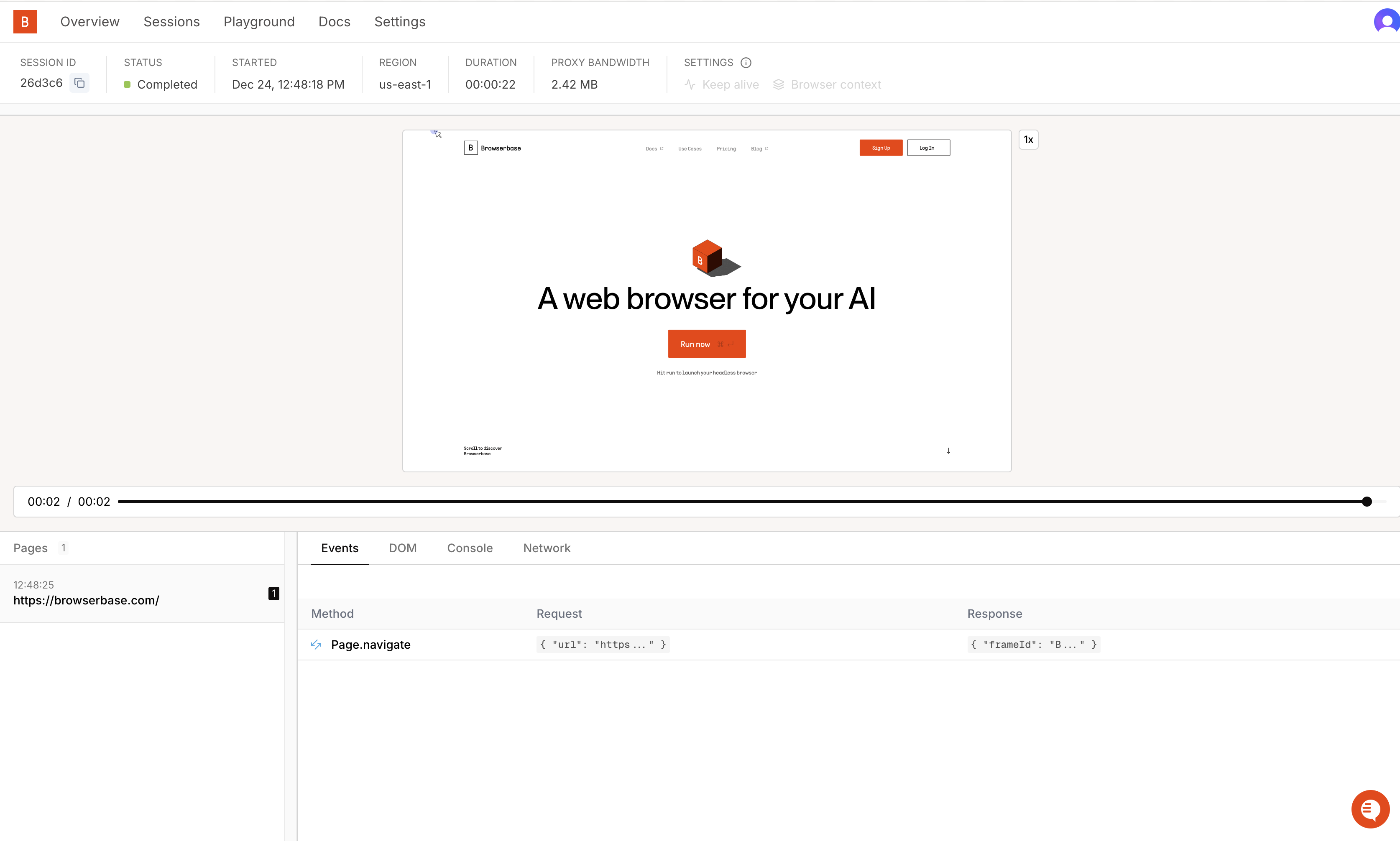
- A high usage of memory or CPUs might result in longer runs and more billed minutes. Look at the logs or open a Live Session URL to pinpoint the root issue.
- In case of high proxy bandwidth usage, inspect the network requests using the Timeline described below.
Note that the replay length may not match the total session duration. This is
because session timing starts when the browser begins running, while the
replay recording only begins when the first page loads. The replay is a
reconstruction of the DOM using rrweb
events.
Live Mode
The Live Debug URL is a URL that can be used to inspect the Session in real-time. This allows for human-in-the-loop debugging, and can be used to debug the Session in real-time.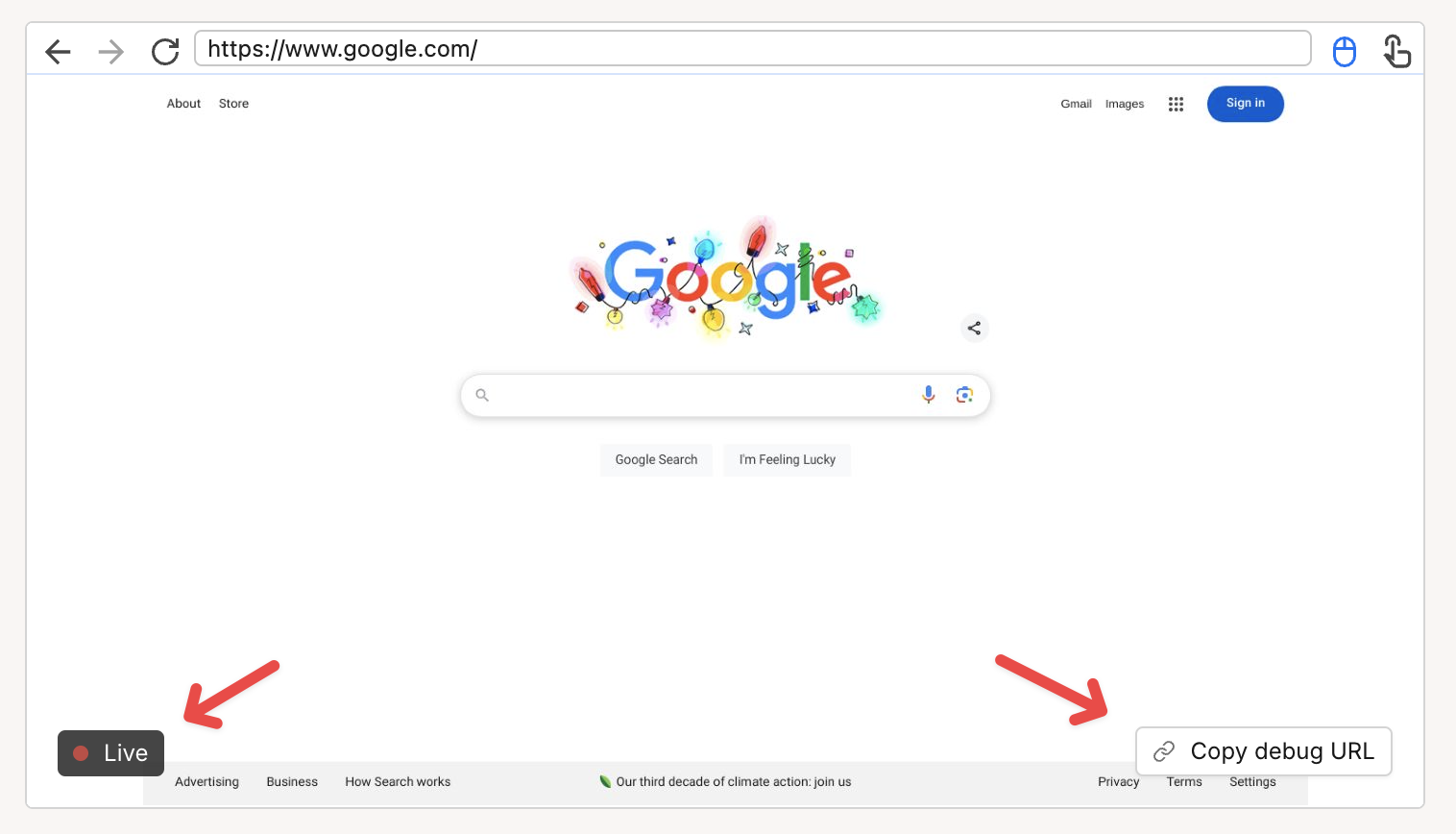
Copy Debug URL button is available in the Session Inspector only when the a live Session is running.
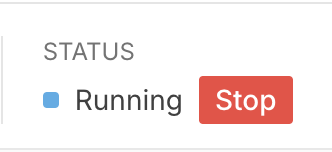
Status Bar
The Status Bar at the top of the Session Inspector displays the status of the Session, and the reason for termination if it has been terminated.
| Property | Description |
|---|---|
| Session Id | The unique identifier of the Session |
| Status | The status of the Session, and the reason for termination if it has been terminated |
| Started | The date and time when the Session was started |
| Region | The region where the Session was run |
| Duration | The length of the Session |
| Proxy Bandwidth | The amount of data transferred through the proxy on the network tab (in MB) |
| Settings | The settings used for the Session (e.g. keepAlive or BrowserContext) |
Replay
The Replay view makes it easy to inspect the actions performed (ex: select or click on an element) and network requests, page by page:
- Adjust playback speed (0.5x, 1x, 2x, or 4x)
- Navigate to specific points in the playback timeline
- Pause and resume playback at any point
Events and Pages
The Events view displays the events and pages that occurred during the Session.
- A list of pages that were loaded during the Session
- A list of current CDP events that occurred on each page (e.g.
Runtime.*,Page.*,Input.*, andLog.*events) - A list of network requests and responses that occurred during the Session
Stagehand 🤘
The Stagehand tab is an inspection tool for sessions created with Stagehand.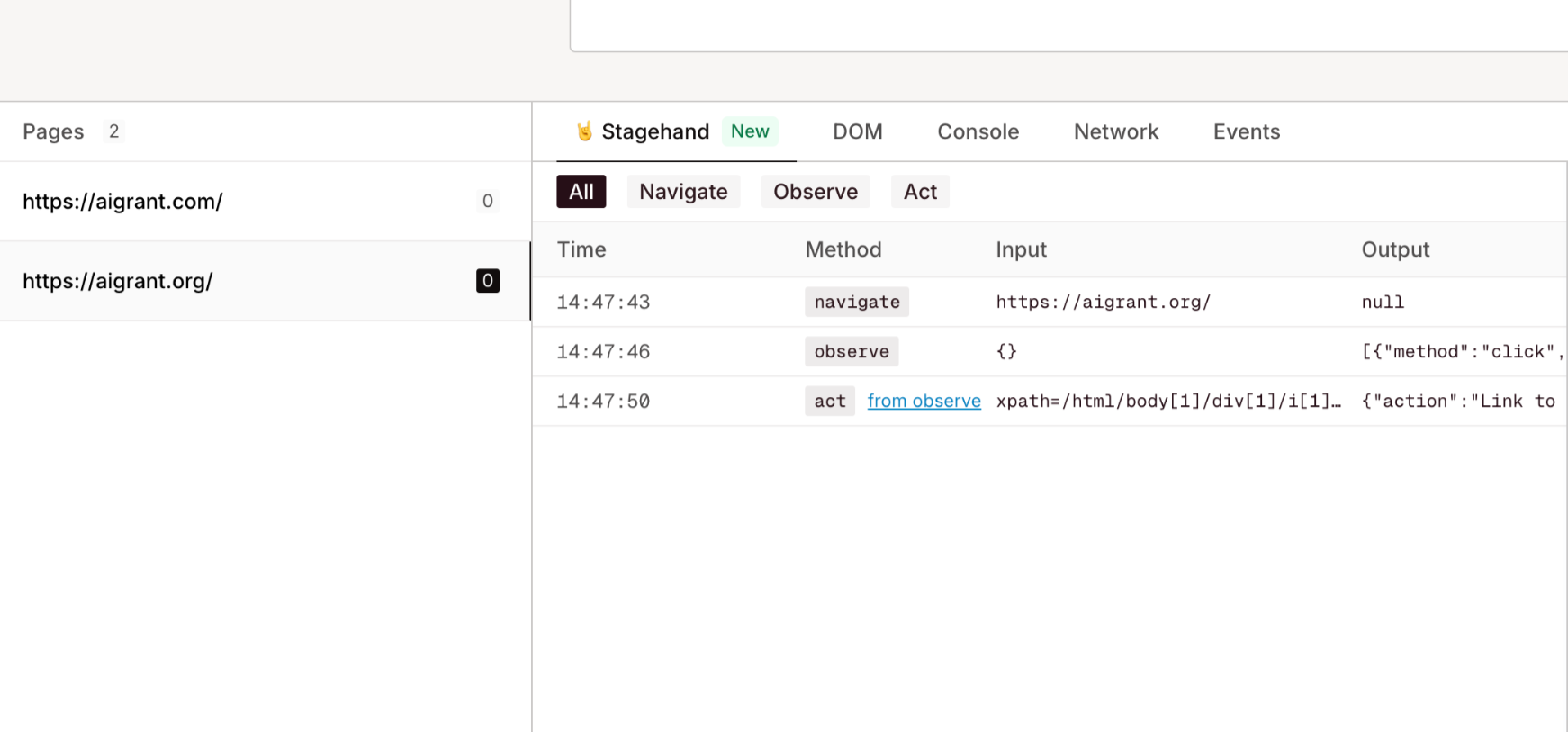
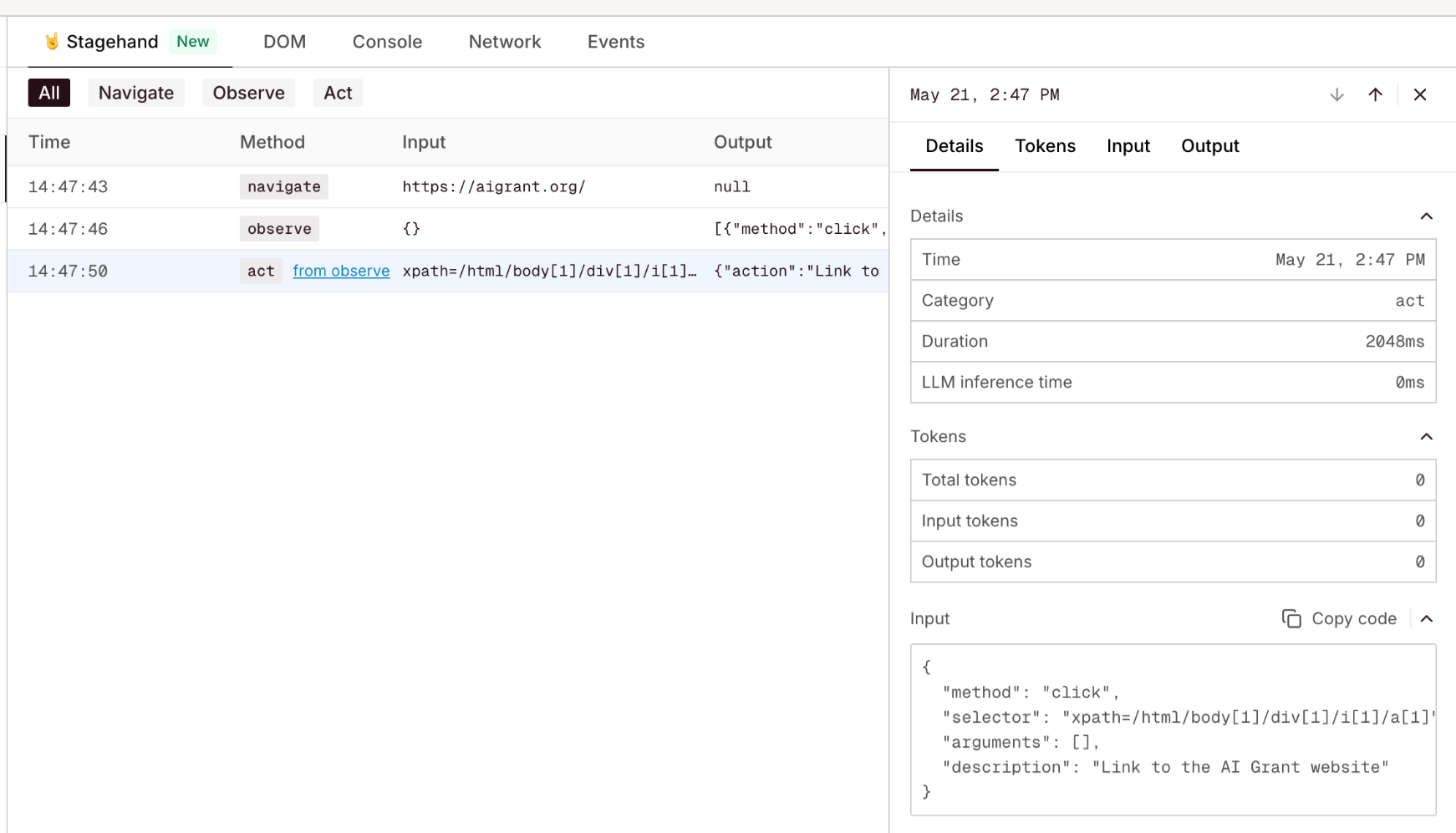
- Token usage
- Execution time
- Extraction schemas
- Execution results
extract calls, you can utilize the schema language dropdown to select the format you want to view the schema in. By default, the schema is displayed in JSON. However, you have the option to view the schema in Zod format. We’re working on adding more schema languages in the future.
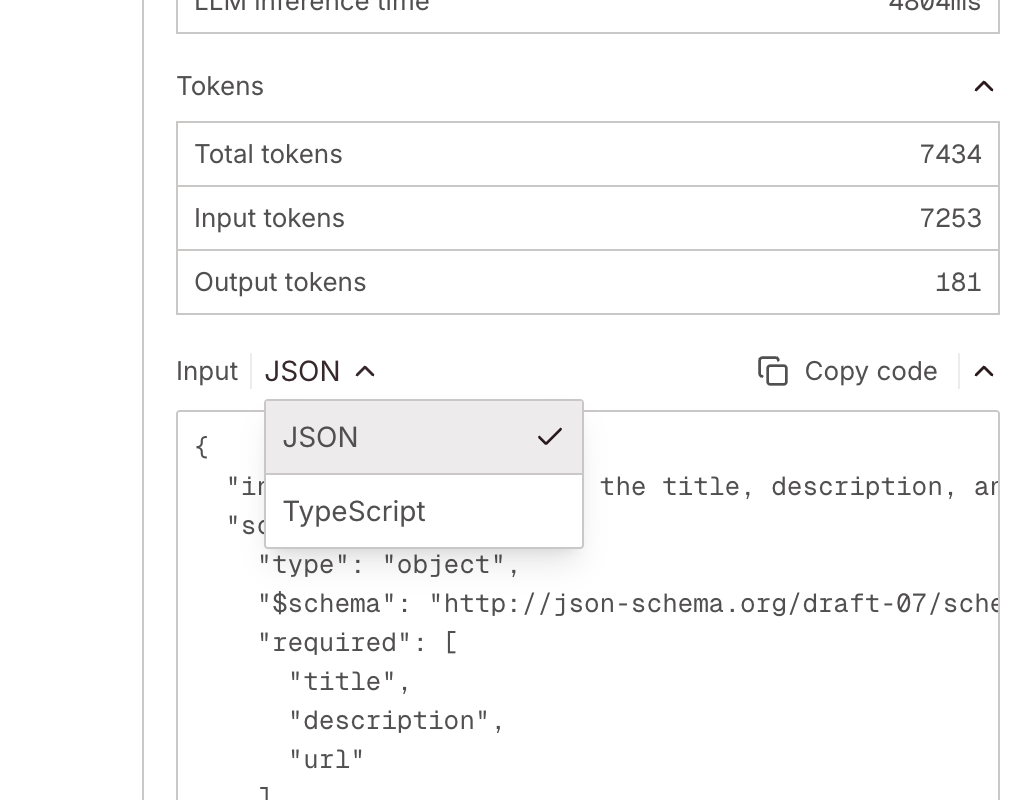
Logs
The Logs tab features the raw Chrome DevTools Protocol logs. The raw logs are rich, spanning over 2 main families of events:DOM View
(DOM), describing in detail any actions and updates performed during Session
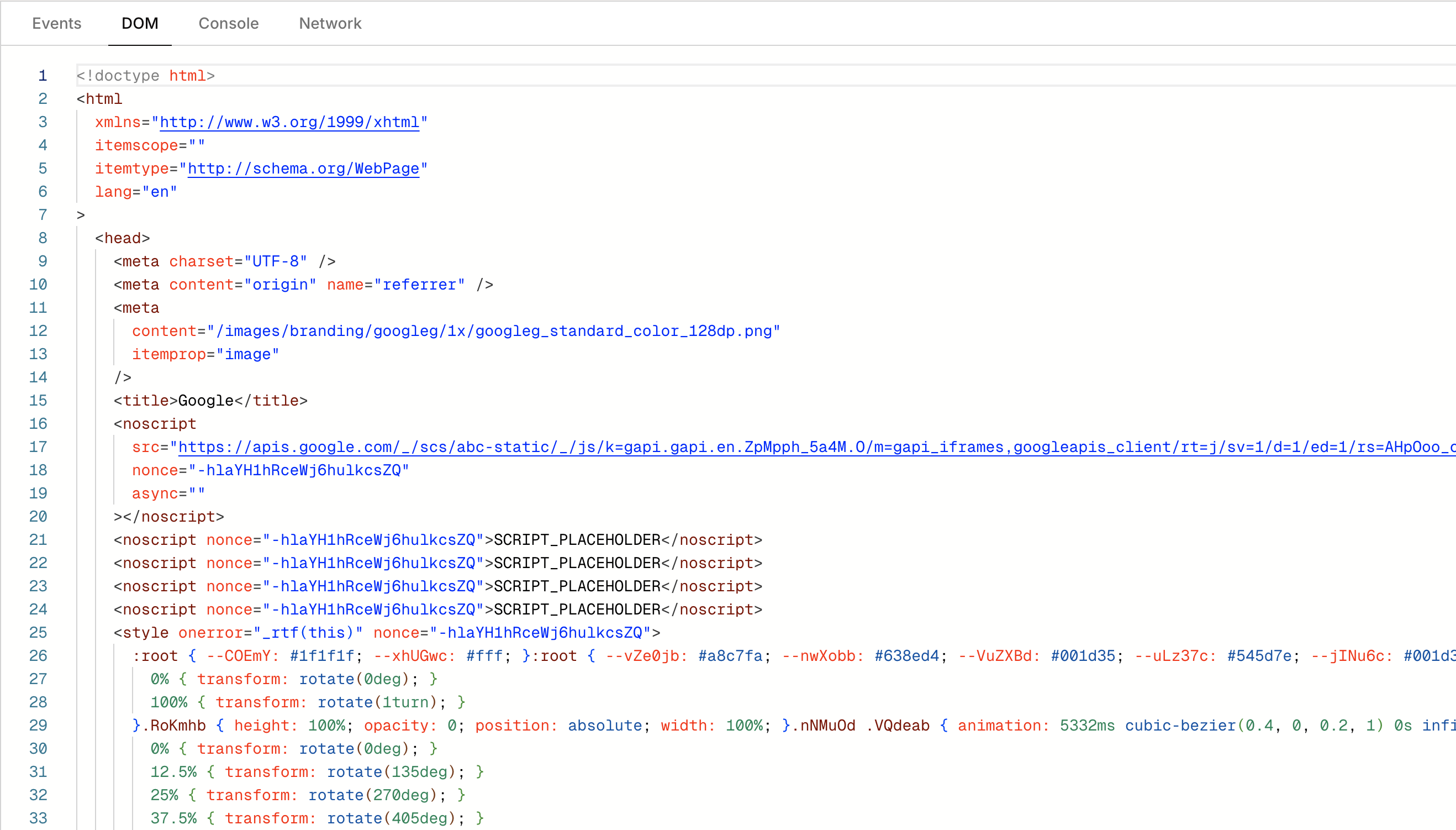
Console logs
Logs emitted by the Web Console API (ex:console.log()), making debugging remote Sessions as easy as using your browser

browser-solving-startedbrowser-solving-completedbrowserbase-keeping-connection-aliveStarting recording
[DOM] Updated style of [body] or [Network] Request finished loading: GET "https://example.com/style.css"
Network events
Network events (Network), describing in detail any network requests and responses performed during Session
The Timeline also features logs emitted by the Web Console API (ex: console.log()),
making debugging remote Sessions as easy as using your browser.
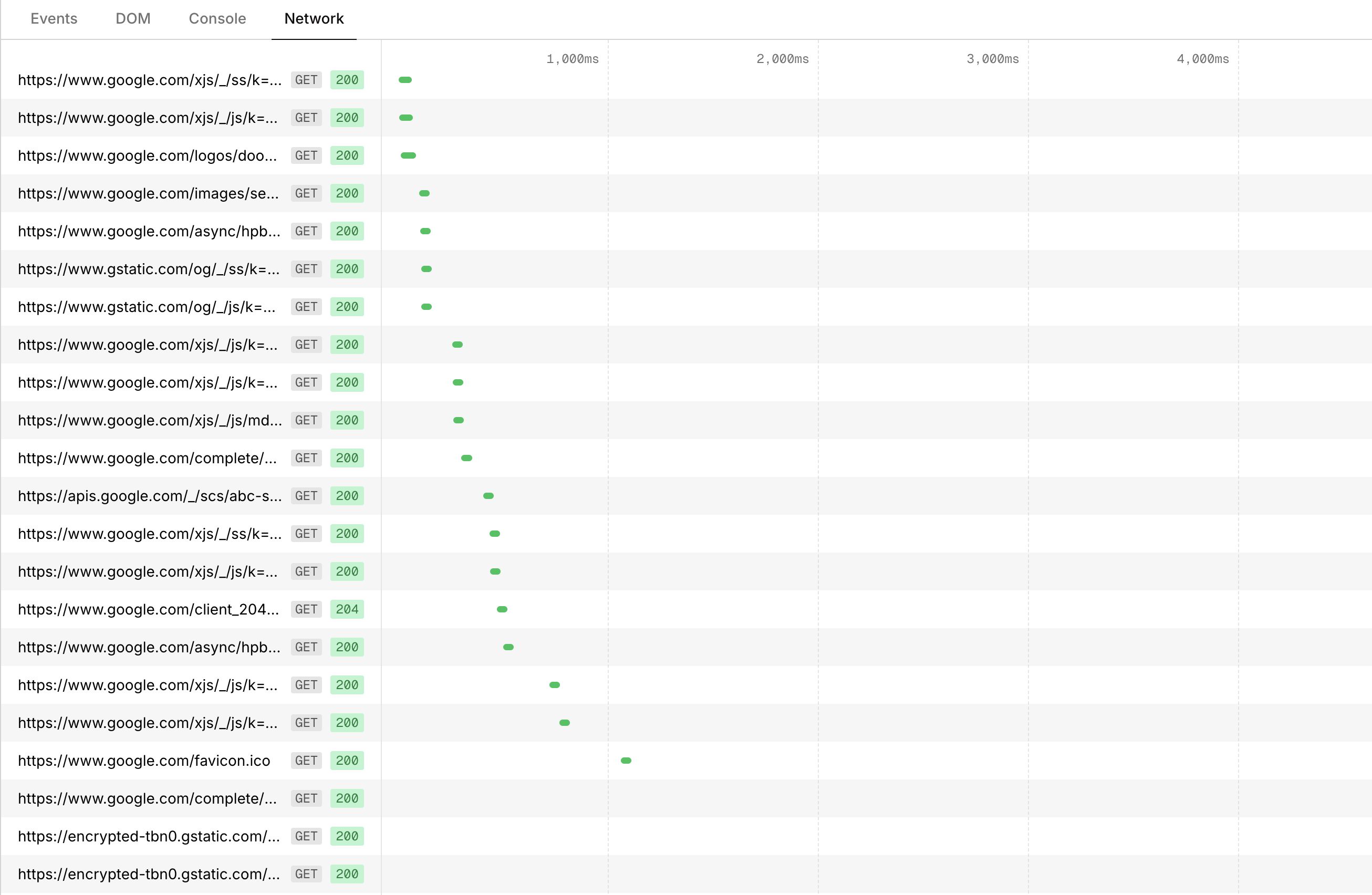
Logs can also be retrieved using the Sessions
API for automated processing.